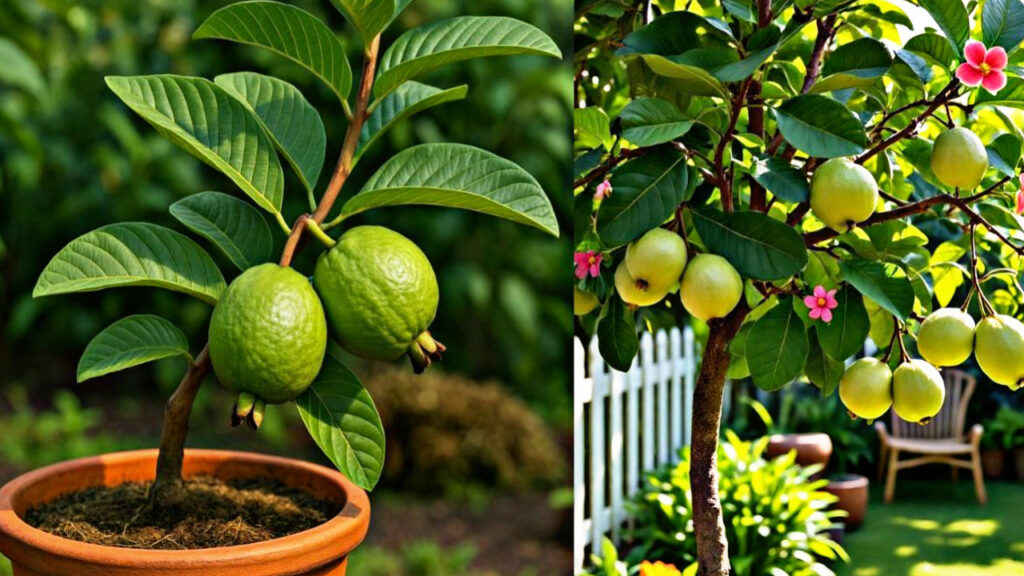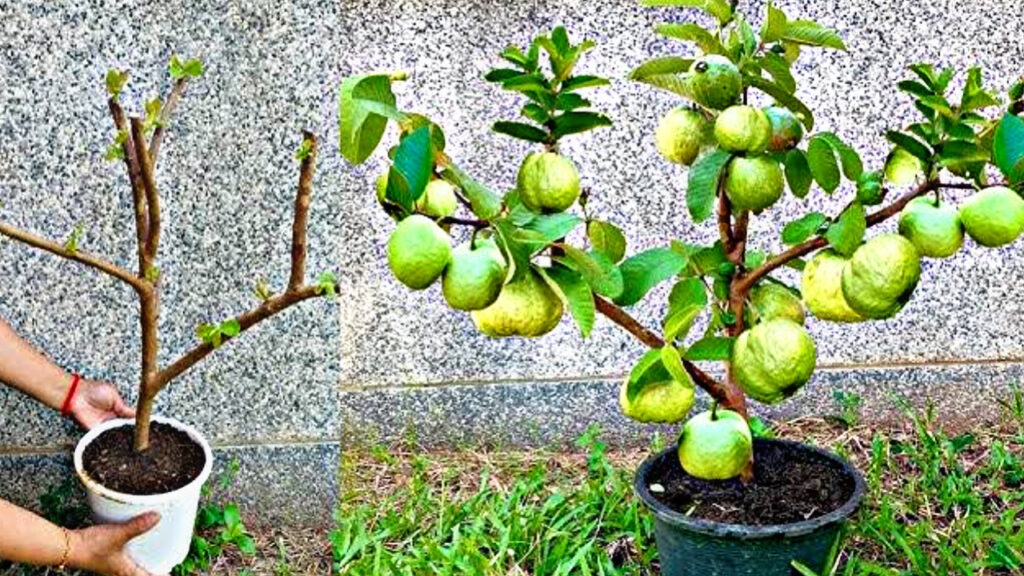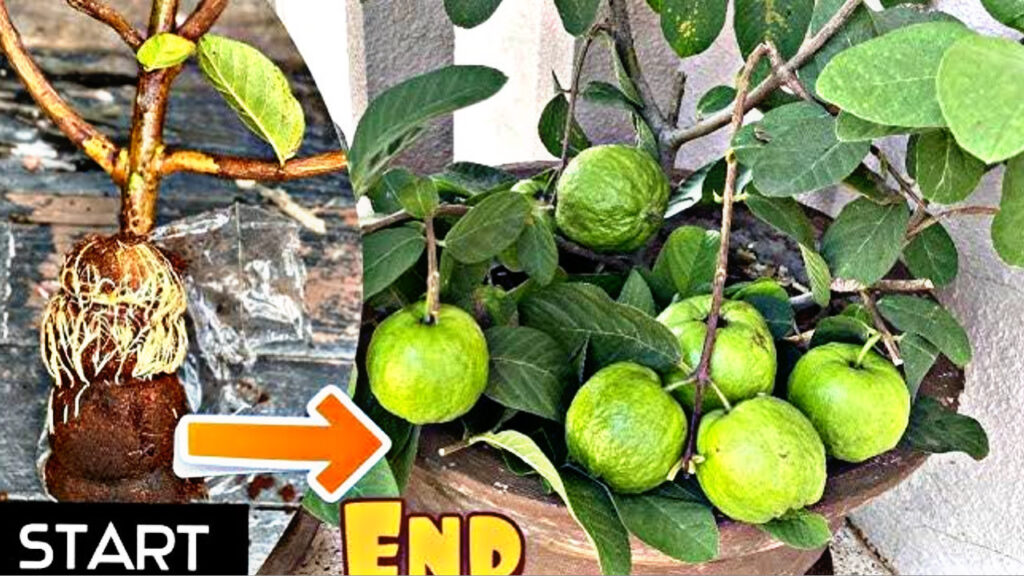Guava Plant
Guava, also known as Amrood in Hindi, is a tropical fruit loved for its sweet and tangy taste as well as its numerous health benefits. What many people don’t realize is that guava plants are surprisingly easy to grow at home, even in a pot. With the right method, you can enjoy fresh guavas from your balcony or terrace garden.

Why Grow Guava at Home?
Guava is rich in Vitamin C, antioxidants, and dietary fiber. Freshly picked guavas from your own plant are not only tastier but also free from harmful chemicals or pesticides. Growing it at home also gives you the joy of gardening and adds greenery to your living space.
Choosing the Right Pot and Soil
To grow guava in a pot, choose a container that is at least 16-24 inches deep and wide. Guava plants have strong roots, so they need space to grow. The pot must have good drainage holes to prevent waterlogging.
Use well-draining soil that is rich in organic matter. A mix of garden soil, compost, and sand in equal parts works well. You can also add some cow dung manure or vermicompost to enhance soil fertility.

Selecting the Guava Plant
You can grow guava either from seeds or by purchasing a grafted sapling from a nursery. While growing from seeds is possible, it takes longer to bear fruit. A grafted plant usually starts giving fruits within 1-2 years, making it a better choice for home gardeners.
Planting Process
- Fill the pot with the prepared soil mix.
- Place the guava sapling in the center and cover the roots gently with soil.
- Water the plant immediately after planting.
- Place the pot in a sunny location. Guava needs at least 6-8 hours of sunlight every day.
Watering and Care
Guava plants do not require frequent watering. Water the plant only when the top layer of the soil feels dry. Avoid overwatering, as it may lead to root rot.
Prune the plant regularly to maintain its shape and encourage branching. Remove any dried or dead leaves to keep the plant healthy.
Fertilizing the Plant
Feed your guava plant every month with organic fertilizers like compost or banana peel fertilizer. During the fruiting season (usually late summer to winter), you can increase the feeding frequency to support fruit development.
Common Pests and Diseases
Keep an eye out for common pests like aphids or mealybugs. You can use a neem oil spray to control them naturally. Ensure proper air circulation around the plant to prevent fungal infections.
Harvesting the Fruits
Guava fruits are usually ready for harvest when they turn light green or yellow, depending on the variety. The fruit should feel slightly soft when touched. Use clean scissors or clippers to cut the fruits to avoid damaging the plant.
Growing guava in a pot at home is simple, rewarding, and suitable even for small spaces. With minimal care, you can enjoy organic guavas from your own mini garden. Start with one plant, and you might soon want to grow more!





